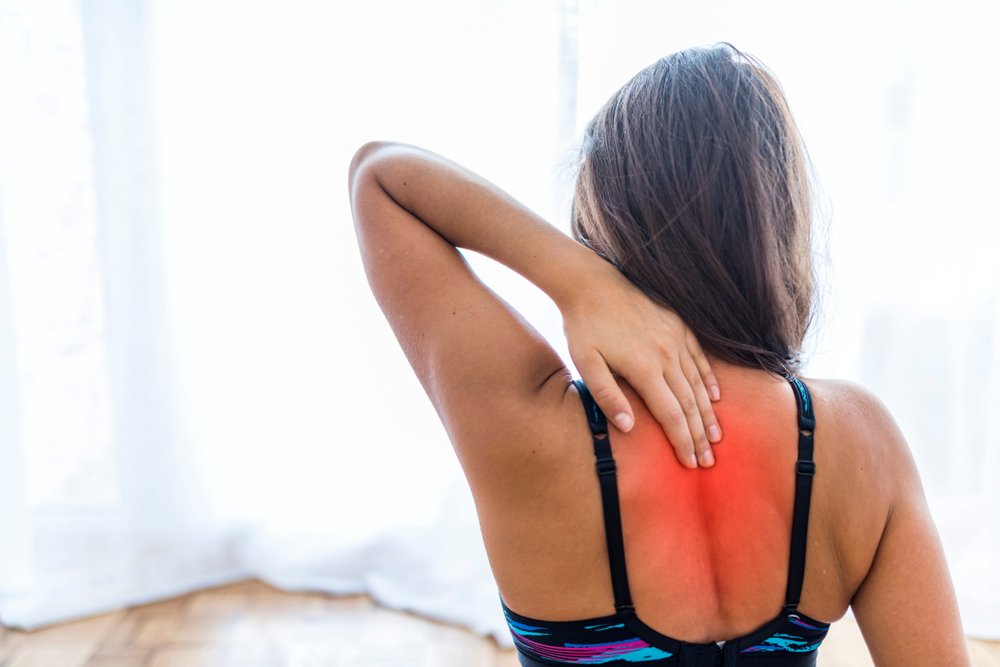Upper Back Pain – Causes and Symptoms
The thoracic spine, often known as the upper back or middle back, is meant to stabilize the rib cage and protect the essential internal organs in the chest. The upper back is highly resilient to damage and pain compared to the neck and lower back. An injury or poor posture overpowers the thoracic spine's strength that are the most common causes of upper back discomfort. You should ask a pain management specialist for upper back pain.
What Can Go Wrong with the Thoracic Spine?
The thoracic spine consists of 12 vertebrae, numbered T1 through T12, that run from the base of the neck down the back of the torso. Its vertebrae can only move a limited amount since each is attached to a pair of ribs and the front of your chest, which together with the sternum, form what is known collectively as your rib cage. This makes the thoracic spine much more immobile than the neck and lower back.
In most cases, the pain in the upper back is caused by one of the following:
Muscle aches and pains - The shoulder blade and the back of the rib cage are attached to the shoulder girdle by massive muscles. Strains or tightness in these major upper back muscles can be extremely difficult and painful to treat. De-conditioning (loss of strength) or overuse injuries are the most common causes of upper back pain (such as repetitive motions).
Dysfunction of the joints - The thoracic spine's joints can become inflamed and dysfunctional for a variety of reasons, including trauma or age-related deterioration. A facet joint's cartilage or the joint capsule may tear as examples.
If upper back pain is so severe that it restricts one's ability to perform daily tasks, it is most commonly described as a sharp, searing pain in a single area or a general achiness that can flare up and spread to the shoulder, neck, or elsewhere.
Symptoms of Upper Back Pain
Pain in the upper back can feel like the following:
Sharp-pain - Excruciating, knife-like, or like you're being held in a vice are some of the most common descriptions of this agony.
Discomfort - Anywhere from the upper back to the neck or lower back may be affected by an achy or throbbing pain that spreads from there.
Stiffness - In extreme cases, severe pain or general soreness can cause ligaments, the upper back muscles, and/or joints to become inflexible.
Radiating pain - A thoracic spine nerve may carry this pain to the arm, stomach, chest or elsewhere in the body.
The sensation of tingling or weakness - Both radiating pain and these symptoms may travel down a nerve from the thoracic spine to the upper and lower extremities as well as the stomach and abdomen.
Upper Back Pain Causes
Poor posture - Regularly sitting for long periods of time with bad posture or leading a sedentary lifestyle can alter the structure of the back and neck. Muscles can weaken and decondition over time, making it more difficult to maintain neutral spinal position.
Improper lifting - The upper back might be overworked if you lift something heavy without maintaining your spine straight. If you lift or hold a heavy object above your head with your hands oriented farther to the left or right of the center, you run the risk of injuring your shoulders and upper back. As a result of lifting an object that is overly heavy, upper back pain might also occur.
Overuse - Excessive use of the upper back can result in ligament sprains, muscle strains, and inflammation, such as helping a friend move or painting a ceiling (all of which require labor above the head).
Collision with another object - Upper back discomfort can be caused by injuries to the spine, discs, ligaments, muscles, nerves, and other soft tissues as a result of a car incident, a fall from a ladder, or a sports collision.
At Oklahoma Pain Treatment Centers our pain management specialists got your back! We are here for your spinal and back issues.
**Disclaimer: These tips are not advised or suggested by doctors. The products that are promoted here are not FDA CERTIFIED to treat, cure or prevent any disease.

